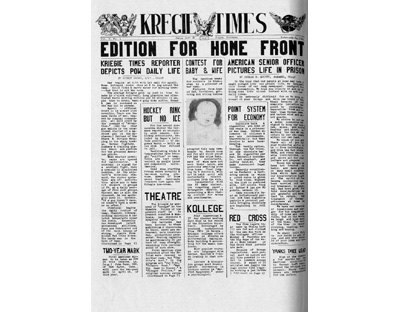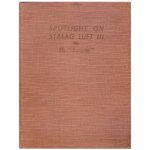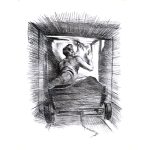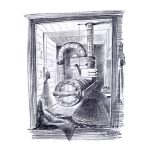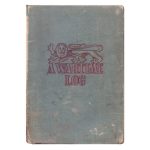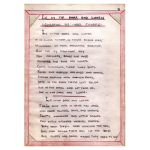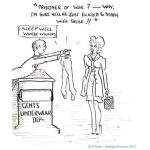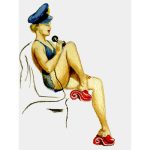Camp Life
OVERVIEW
For the POWs in Stalag Luft III, boredom was the foremost issue they had to overcome. Their basic needs were met, albeit sometimes as regard food erratically, and the Germans in charge were by large a reasonable bunch, who themselves just wanted to survive the War as uneventfully as possible. It is not surprising then that much effort was put into the process of simply killing time. Of the many activities made available to the men reading was perhaps the most popular. With help from the Y.M.C.A and donations from home, the camp eventually accrued a substantial library. Education classes were also made available, as a result of which many POWs earned degrees in a variety of subjects, from engineering to law. The exams were supplied by the Red Cross and supervised by various academics who had traded the classroom for wings. The POWs were allowed to erect a covered theatre in each compound. They put on shows twice a week, with an eclectic schedule that included W. Somerset Maugham’s Home and Beauty and Shakespeare’s The Merchant of Venice. The authorities also gave the prisoners access to the camp’s public address system to broadcast news and music. This informal radio station was called KRGY, playing on the name they had assigned themselves, Kriegie, which in turn had been taken from the German word for prisoner of war, kriegsgefangener. The constant thirst for reading matter led to the launch of two newspapers, the Circuit and the Kriegie Times, which were published four times a week. They mostly contained snippets of camp news, reviews of their theatrical shows, and all the latest sports chatter and scores. Both the radio station and newspapers had to tread a careful path with their content so as not to fall foul of the German censors.
A third publication appeared during 1943, the year leading up to the Great Escape, Scangriff. The name was an amalgamation of the word scandal and the title of a German newspaper, Der Angriff. You will find few if any references to Scangriff in the official history of Stalag Luft III, which makes the subject the more intriguing and worth some extra mention. The paper was founded by F/L Mark S. Winston whose aircraft, a Short Stirling (BK714), was shot down over Rostock, Germany on April 20th, 1943 (Adolf Hitler’s birthday as it so happened). Among the contributors to Scangriff was one F/Lt Paul Brickhill, a captured Spitfire pilot who had previously worked as a journalist for a Sydney newspaper, The Sun, in his native Australia. During the Long March in the winter of 1945 when the camp was evacuated, the manuscripts of Scangriff were carried in a mess tin and eventually found their way safely back to England. As he trudged through the snow alongside, Brickhill’s pack similarly bore the extra burden of a stash of writings. Held within were the notes and outlines of a book, not just any story, but one that what would become the textbook on Stalag Luft III, The Great Escape. Elsewhere among the cold and weary procession of over 10,000 men, F/Lt Keen carried his own literary offerings within his Wartime Log, in particular, his piece chronicling the night of the escape, The Tunnel.
- Spotlight on Stalag Luft III - Scangriff (1946)
- Drawing of Tunneler by Ley Kenyon
- Drawing of Air Pump by Ley Kenyon
FOOD
If reading was the POW’s favorite occupation then Food, the availability and the lack of, was their most popular topic of conversation. It came from two sources, a weekly Red Cross parcel and the Reich Ration provided by the camp. For most of the time, the supply of food was reliable, though in the last few months before the evacuation the Reich compliment largely fizzled out as the whole infrastructure of the country fell into disarray. At that point, hunger became a serious issue. The cookhouses served as a magnet for the men, not just owing to what went on inside, but because this is where the Germans published the latest news on the war front. It was usually quite accurate and honest, though couched in terms to at least preserve some shred of optimism as their fortunes increasingly waned. Food stocks were also bolstered by produce from the camp’s vegetable gardens and the tending of which provided another means of recreation for the men. Seeds were supplied by the Red Cross or sometimes smuggled in and traded by the Guards.
Typical Daily Menu for POWs in Stalag Luft III
Breakfast – German bread with jam, coffee or tea.
Lunch – Thin Potato Soup, coffee or tea.
Supper – Potatoes and meat roll, German bread, coffee or tea.
Evening Snack – Toast, coffee or cocoa.
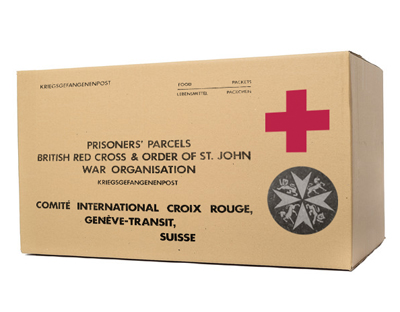
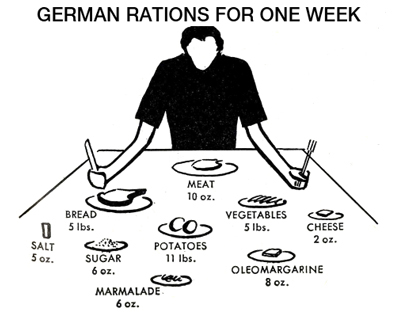
When food was scarce men resorted to bed-bashing to preserve their stocks of energy. The Reich diet only accounted for around 1,600 calories per day, which was hardly enough to keep a small child active. The Red Cross parcels were literally a lifeline, without which many of the men would have struggled to survive their time in the camp, let alone the hardships that would follow during The Long March.
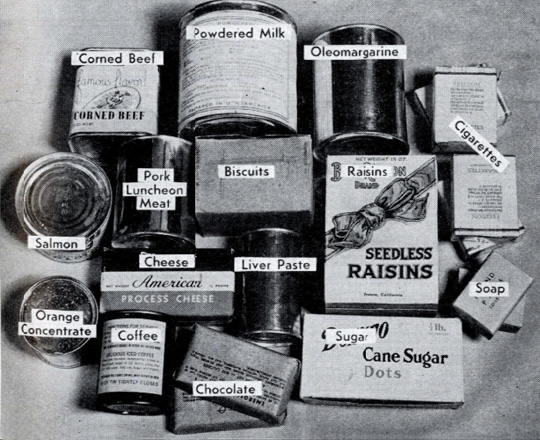
Typical contents of a U.S. Red Cross Food Parcel
The camp also had its own marketplace, known as Foodacco, which allowed POWs to trade their surplus goods for points to be redeemed for other merchandise. For instance, if prisoner Joe had a surplus of jam but was short of chocolate, he would jog along to Foodacco and trade the jam at its market value of forty points and receive chocolate for its price of thirty points. The remaining ten points would be added as a credit to his personal account.
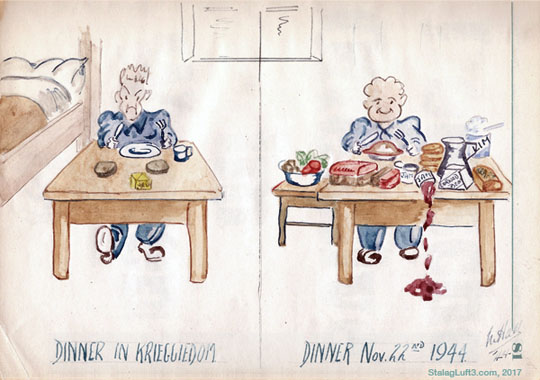
The POWs even had their own currency, Lagergeld, which could be used to purchase whatever goods the German administration made available. All Officers were paid a salary by the Germans in Lagerfeld, though this did not extend to NCOs. To maintain fairness, all wages were pooled and used on a communal basis.
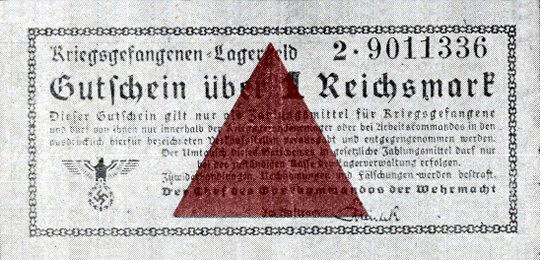
The POWs even had their own currency, Lagergeld, which could be used to purchase whatever goods the German administration made available. All Officers were paid a salary by the Germans in Lagerfeld, though this did not extend to NCOs. To maintain fairness, all wages were pooled and used on a communal basis.
POW MAIL
Of all the things that punctuated the tedium of POW life, mail from home was the most valued and eagerly awaited. From bearing a photo of a sweetheart to providing gossip from someone’s hometown, these letters offered a vital link to family, friends and, just as importantly, normality. However, not all news was good news. Dear John letters were not uncommon, and it is widely believed that mastermind of The Great Escape, S/L Roger Bushell, received just such a letter a few weeks before hatching the scheme. It is also worth remembering that for those back home, the whole experience brought its own share of emotional trauma. They had often received official telegrams stating that their husband or son was missing in action, only to find out later that they were still alive, and now writing to them from the midst of enemy territory.
On average mail took around a month to reach the camp from England. During that same period, the men in return were allowed to send three letters and four postcards. All mail was intensively censored by the goons.
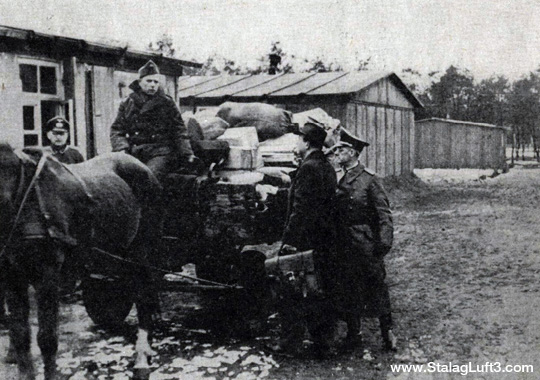
Mail and parcel deliveries to Stalag Luft III were made by a horse and wagon
Below is an assortment of quotations from Stalag Luft III POW’s mail as recorded in the Wartime Log of F/LT Keen
“I hope you are doing nothing to annoy the guards.”
“I was sorry to hear you were upset about my getting married, but really I don’t think we should have got as far as that.”
“I’m trying to build up a small supply of grub for when you return, I’m going to make you drink hot milk, whiskey and a raw egg every night to make you strong again.”
“I have been leading a Nun’s life for three years.”
“It seems incredible to me you are in the heart of Germany, but you are, aren’t you?”
“We won’t waste time getting married if you are of the same mind as I.”
“Your prayer for homecoming had better be ‘Lord give me strength’.”
WARTIME LOGS
As well as reading, many of the POWs passed their time creatively by working in their Wartime Logs, which were provided by the Y.M.C.A. Comprising over a hundred pages, they were designed as a personal scrapbook and contained a mixture of writing paper and a more heavy duty card. The men used them for sketching, painting, writing poetry and recording observations of camp life. Many would take great care to keep their logs hidden from the prying eyes of the authorities, storing them in secret cubbyholes in the walls. Written within the camp at that time, they still stand to this day as the most accurate record of life and events within Stalag Luft III. Unfortunately, the vast majority were lost or left behind during the upheaval of the evacuation and subsequent rigors of The Long March.
F/Lt Keen's Wartime Log from the North Compound of Stalag Luft III (1943-45)
SPORT
Sport played a vital role in maintaining both the mental and physical well-being of the men. Sports Officer W/C Hyde was in overall charge of events, helped by a team of Officers, each responsible for a particular activity.
Not surprisingly, with such a strong British contingent, Soccer was the primary sport during the winter months. Most of the men got to play at least one game a week, and the pitch was in constant use even in between matches. Officers versus Orderlies was one of the top fixtures, drawing large crowds and summoning up all the atmosphere of a cup-tie. For those who were not sportingly inclined, there remained what was perhaps the most popular form of exercise in the camp, walking the wire. At any hour of the day, a scattered parade of men could be seen strolling the perimeter of the compounds, completing however many circuits they had set for their personal regime. In the summertime, the Germans also allowed the fire pools (water reservoirs) of each compound to be used by the POWs for swimming.
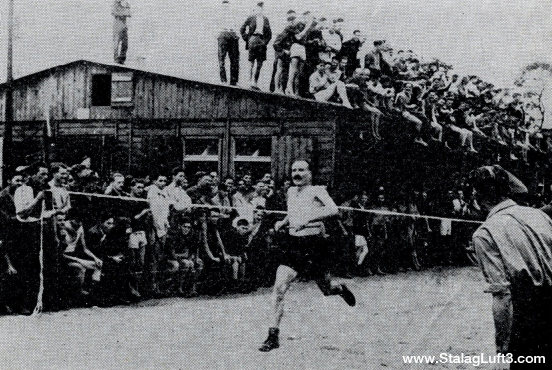
A Sports Day in Stalag Luft III
Despite efforts over the years to bring Ice Hockey to the compounds, it was only in the winter of 1944-5 that the weather provided sufficiently cold and consistent conditions to make it worthwhile. A serious effort was then put into the building of rinks and the preparation of the ice. Three rinks in all were constructed, plus two practice areas. From the very start, the Canadians demonstrated their prowess in this sport. Bruising contests such as Eastern Canada v The West (USA) and R.A.F Canadian v R.C.A.F. made for exciting viewing.
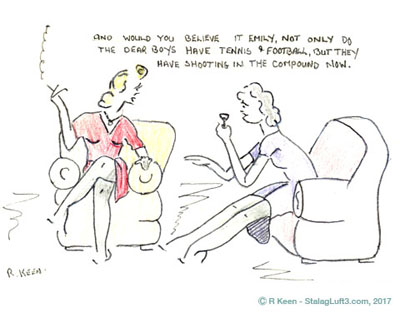
Sports Cartoon from Stalag Luft III
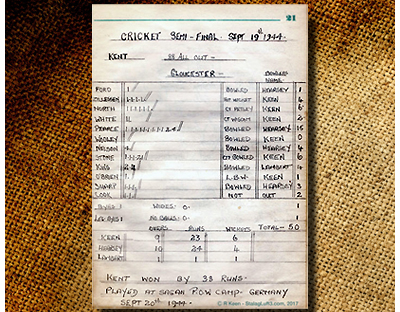
Scorecard from a Cricket Match in North Compound, Stalag Luft III
Another of the most popular sports, especially in the North Compound, was Cricket. To play the game beyond the summer months, a matted wicket was introduced. The leagues were based on a block or hut basis and named after English county teams. The foremost teams were widely considered to be Huts 122, 106 and 112. Players like Mulligan, Morgan, Torrens, and Giddey were some of the star names. F/Lt Keen regularly played for Kent and in the scoresheet below, among his tally of wickets as a bowler that match was Marcel Zillessen. Zillessen was the inspiration for the James Garner character The Scrounger in The Great Escape movie.
Sometimes international matches were arranged, such as The Yanks v The Canadians, lighthearted affairs with neither nation too familiar with the sport, and more serious contests like the ones between Australia v The Rest.
Without a doubt, the most ambitious and somewhat surreal story as regard sport in the camp belongs to the Americans. They set up a six hole Golf course in the Center Compound, complete with traps, bunkers, and greens. The sixth-hole passed straight over one of the latrine blocks, and POWs had to have their wits about them when entering or departing for fear of low-flying shots.
Softball also gained its share of supporters, with The Major league exhibition matches drawing significant crowds. Terms such as “strikeout,” “third base,” and “shortstop,” soon became common jargon among the POWs of all nationalities. Teams with names such as Clare’s Cardinals, Noble’s Indians, and Giants, produced a series of matches that captured the enthusiasm of many who had not even heard of the game of softball before their arrival in Stalag Luft III.
Rugby and American Football also attracted some degree of interest. However, the playing surfaces offered by the compounds were far from ideal and greatly increased the risk of injury to those hardy or foolhardy enough to get involved. Other sports that were enjoyed by the men included Volleyball, Boxing, Gymnastics, Tennis, and Table-Tennis.
HEALTH
From reading all the above, one may conclude that the men in Stalag Luft III enjoyed a somewhat charmed life when compared to other POWs of World War II. Many of the camps favorable conditions can be directly attributed to the fact that it was administered by the Luftwaffe, who adhered to a more gentlemanly code of conduct than their often notorious counterparts. However, there was no escaping the fact that many of these men were deeply traumatized by the events leading to their imprisonment in Stalag Luft III. F/Lt Keen had jumped from a burning Halifax bomber over Holland, with several of his crew including the Pilots already dead. A veteran of the First Thousand Bomber Raid, he had seen the ancient city of Cologne turn into a living inferno. It is impossible for us to imagine today the psychological toll rendered on such men.
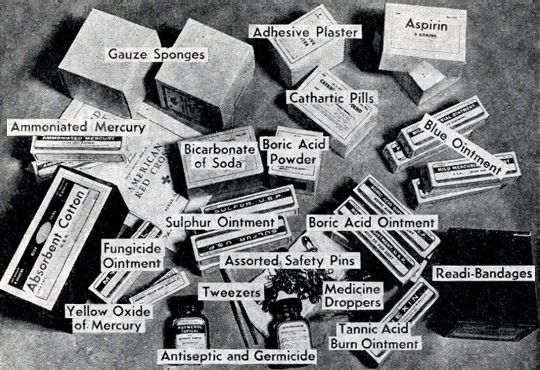
Red Cross Medicine Kit for POWs
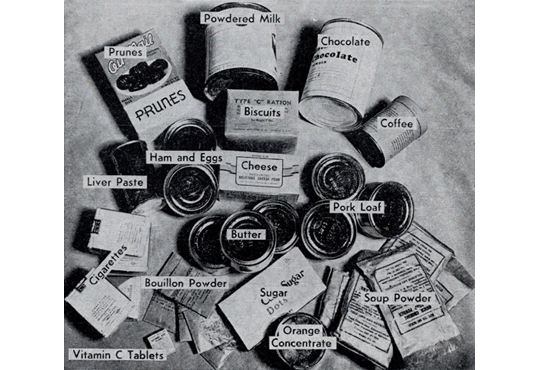
Red Cross Food Parcel for Invalids
The POWs in Stalag Luft III were surprisingly well looked after. Most remained in astonishingly good health in spite of the crowding, inadequate sanitary facilities, and a lack of medical supplies.
For minor everyday ailments such as headaches, cuts, bruises and sprains, colds and influenza, food poisoning, and minor skin issues the compounds maintained a first aid room. More severe cases, i.e., infected wounds/cuts, strep throat and upper respiratory infections such as bronchitis, pneumonia, or asthma were sent to one of the two sick quarters within the camp. Depending on the severity of the condition, cases of Diarrhea and Vomiting, potentially life-threatening, would also be sent to the sick quarters for treatment.
The South Compound sick quarters consisted of a small building with twenty-four beds, maintained by a small staff of orderlies and available doctors, all from the POW population. The same plan for health care served the North and West Compounds, while the Center Compound held a dispensary and two POW doctors. On 1 June 1944, the three compound sick quarters were replaced by a new single building with sixty beds.
The Germans would furnish very few medical supplies, and as a result, the POWs depended upon the Red Cross for shipments which they supplied via Geneva.These shipments were only provided if the Luftwaffe agreed to them, but thankfully they were quite helpful. Much-needed drugs, ointments, bandages, tablets and basic health equipment began to arrive in the autumn of 1944.
If a POW needed an x-ray or the attention of a specialist, he would be examined by a German doctor, which at times took a couple of months to obtain. Usually, the German doctor came to the camps every two to three weeks. Cases requiring surgery were sent under escort to one of the main camp hospitals, as a rule, Lamsdorf or Obermassfeld. Emergency cases went to a French hospital at Stalag 8C, one mile distant.
Dental care for the North, West and South Compounds was provided by a British dentist and an American dental student. In 14 months, it was estimated they gave 1,400 treatments to 308 POWs from the South Compound alone. Sanitation was very poor. Although each POW received a delousing upon entry to the camp, they were plagued by parasites, i.e., bedbugs, lice and local flying and crawling insects. In the absence of plumbing, both indoor and outdoor latrines contributed to the sanitation problem, especially in summer. POWs fought flies by scrubbing daily, constructing fly traps and screening latrines with burlap in place of wire mesh.
Bathing facilities were insufficient. Each man was supposedly entitled to a 3-minute hot shower every week, however the reality varied widely. If a POW missed the opportunity to take a hot shower, he would have to resort to a sponge bath with water he had heated himself – the only other hot water available the year around. This resulted in a considerable lack of personal hygiene elevating the need for treatment to skin conditions from cuts and insect bites.
FAITH AND RELIGION
Religious faith played an important role in many of the POWs lives. As men who had experienced unspeakable scenes during action, and were often burdened by the weight of their own combat deeds, the need to make sense of it all was a constant struggle. Faith, as it has throughout history, provided that light in the darkness.
Within the camp, a number of Christian denominations thrived, providing regular Services and Bible Study. The South Camp had a colorful ecclesiast in the shape of Padre Murdo MacDonald, a minister of the Church of Scotland, who so endeared himself to his American flock that he was subsequently awarded the Bronze Star. Father Phillippe Goudreau, a priest from Quebec, administered to the needs of the Roman Catholic population. He had been bound for Africa on missionary work when his ship, the S. S. Zamzam, was sunk by the German corsair Atlantis, and he found himself tending to the POWs of Stalag Luft III instead.
Christmas was a special time in Stalag Luft III, providing a much-needed respite to the monotonous routine of daily life. The men spared no effort in adorning their huts with makeshift decorations and little trees. Seasonal Red Cross food parcels and extra batches of the camp’s famous Raisin Brew helped to bring the men further cheer. On Christmas Eve, the clergy provided traditional carol services and the camp radio KRGY continued the spirit with a festive playlist. Such nights were memorable, albeit for their somewhat surreal nature. A barbed-wire compound buried deep in the snow-covered pine forests of Germany, within which thousands of men a million miles from home shared the holiest night of the year, with the familiar crackling words.
“Silent night, Holy night
All is calm; all is bright
Round yon virgin, mother and child
Holy infant, tender and mild
Sleep in heavenly peace,
Sleep in heavenly peace.”
However, the abiding thought among all the POWs, as it was this time each year, was “maybe we will be home for next Christmas….”

